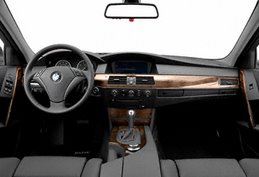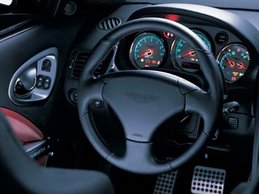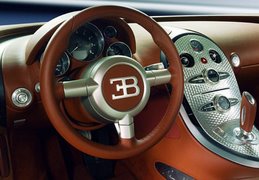 2007 BMW Alpina B7 - Why the B7? BMW acknowledges there’s room for a super 7-series but not a high-revving, hard-core M version. And the company concedes that the short-wheelbase, V-12–powered 760i that was the sporty choice from 2004 to 2006 wasn’t enough in light of the torque-crazy supercharged V-8 or twin-turbo V-12 available at the time in Mercedes’ S-class.
2007 BMW Alpina B7 - Why the B7? BMW acknowledges there’s room for a super 7-series but not a high-revving, hard-core M version. And the company concedes that the short-wheelbase, V-12–powered 760i that was the sporty choice from 2004 to 2006 wasn’t enough in light of the torque-crazy supercharged V-8 or twin-turbo V-12 available at the time in Mercedes’ S-class.Meet Alpina, a German company whose history with BMW goes back 46 years but is little known in the U.S., as the B7 is only the second model officially brought to our shores. The first, about four years ago, was the Alpina Roadster V-8, essentially a version of the Z8 roadster with an automatic transmission. All 450 bound for North America found owners.
The B7 imported here is based on the short-wheelbase 750i, but since Alpina started development back when the 7-series—the 745i—was powered by a 325-hp, 4.4-liter V-8, that’s the basis for the B7. To handle the 11.6 psi of intercooled boost whipped up by the centrifugal supercharger, the engine gets lower-compression-ratio pistons as well as a stronger crankshaft and connecting rods. The result is a mighty 500 horsepower and 516 pound-feet of torque, making it the most powerful 7-series—wait, it’s the most potent BMW—on offer.
How’s this fo
 r thrust? The B7 ties the Audi R8, which is 1100 pounds lighter, at 12.8 seconds through the quarter-mile, at which point the gargantuan Alpina starts pulling away. The 551-hp Bentley Flying Spur can’t keep up, and Audi’s 450-hp S8 is so much slower it’s hardly worth mentioning. To 60 mph and through the quarter, the B7 is within 0.2 second of the 510-hp, twin-turbo V-12 Mercedes S600, which means the Alpina will likely outrun the less torquey, naturally aspirated 518-hp 2008 Mercedes S63 AMG.
r thrust? The B7 ties the Audi R8, which is 1100 pounds lighter, at 12.8 seconds through the quarter-mile, at which point the gargantuan Alpina starts pulling away. The 551-hp Bentley Flying Spur can’t keep up, and Audi’s 450-hp S8 is so much slower it’s hardly worth mentioning. To 60 mph and through the quarter, the B7 is within 0.2 second of the 510-hp, twin-turbo V-12 Mercedes S600, which means the Alpina will likely outrun the less torquey, naturally aspirated 518-hp 2008 Mercedes S63 AMG.The ride is unexpectedly compliant considering those huge wheels, but there is an element of trust needed to push the B7’s limits, as heavy steering and a general sense of isolation make it less involving than we might like, not instantly syncing the driver to the car’s capabilities as does a Porsche Boxster. Somehow, the B7 numbs your senses—well, you are sitting in a supremely comfortable 20-way-adjustable seat—into thinking you’re traveling about 20 mph slower than you actually are, which makes staying below triple-digit speeds a constant struggle, even with a sluggish throttle that needs to be booted to get results. That said, competitors such as the S-class have a long way to go to be this communicative.
Ah, yes, the price. The B7 starts at $117,075, some $40,500 more than a 750i but $8,000 less than a 760Li and not out of line with competitors such as the upcoming S63 AMG, which we expect to go for $125,000. Of course, the B7 gets BMW’s four-year/50,000-mile warranty with all service included—wonder what that’s worth on a car like this.

In Europe, Alpina offers a full lineup of modified BMWs in addition to the B7, including the B3—a higher-output, 360-hp 335i—as well as 5- and 6-series cars (B5 and B6) with the B7’s powertrain. We think the B5 and B6 could find a following here as they have just as much horsepower as the M5 and M6, a bunch more torque (516 pound-feet versus 383), an easy-to-live-with automatic, a 30-percent-better fuel-economy rating, and perhaps even more performance.
For now, we get to enjoy the B7, of which BMW plans to sell about 1000 copies total, roughly 200 in the first year.



No comments:
Post a Comment